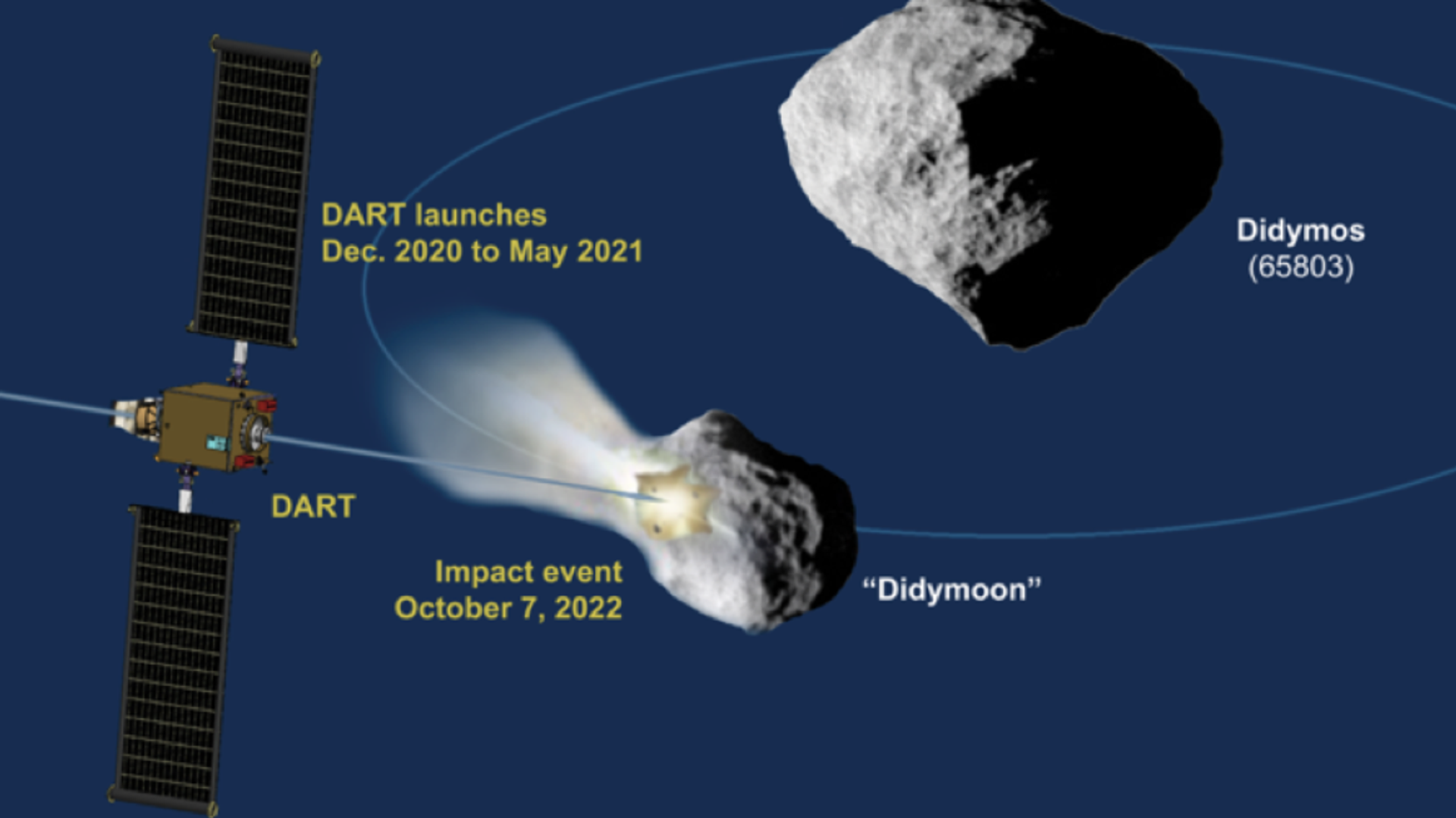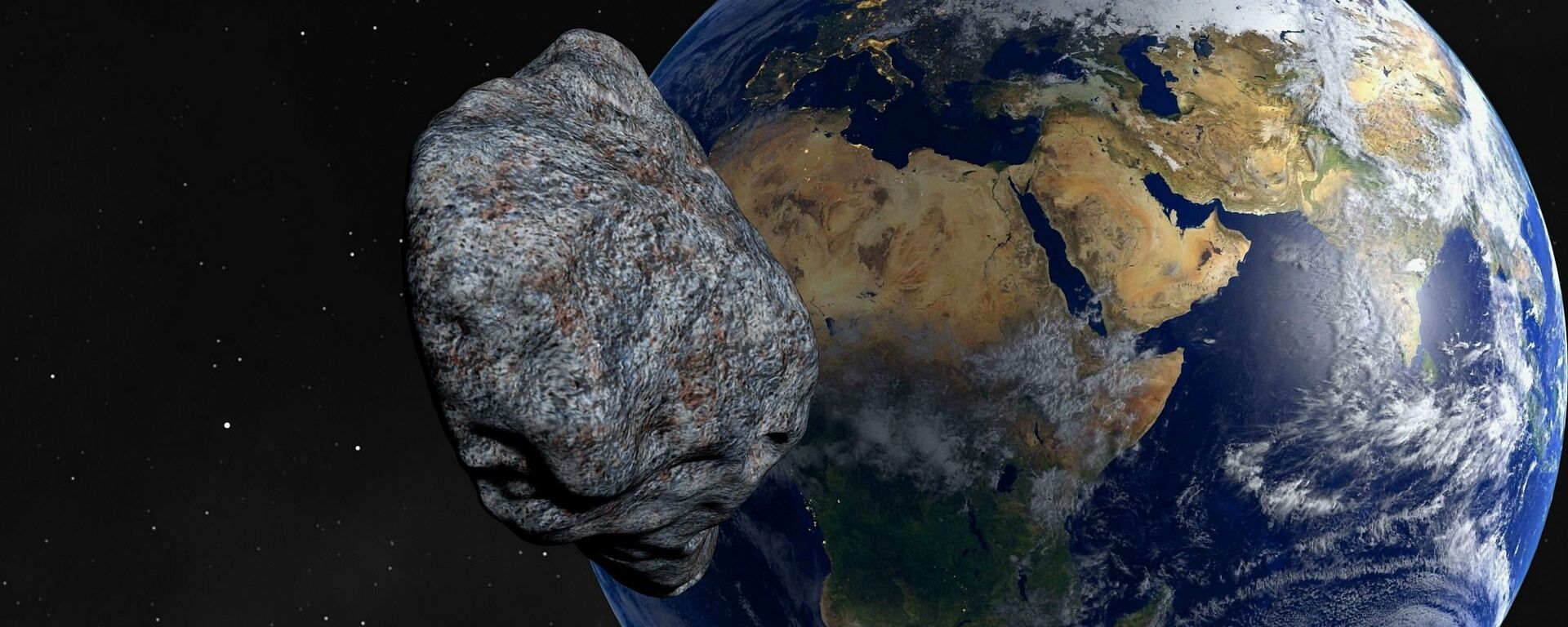https://sputnikglobe.com/20220926/nasa-starts-double-asteroid-redirection-test-1101246134.html
NASA Starts Double Asteroid Redirection Test
NASA Starts Double Asteroid Redirection Test
Sputnik International
A European Space Agency (ESA) spacecraft is due to take off next year in order to approach an asteroid targeted by NASA’s mission and to assess the impact. 26.09.2022, Sputnik International
2022-09-26T17:30+0000
2022-09-26T17:30+0000
2022-09-26T17:34+0000
science & tech
nasa
asteroid
redirection
test
spacecraft
https://cdn1.img.sputnikglobe.com/img/107684/08/1076840877_0:38:1163:692_1920x0_80_0_0_9a8a4cd681f7da6a8f295a0ac095efad.png
US space agency NASA is planning on ramming one of its spacecraft into an asteroid in order to determine whether humanity could use this method to steer potentially dangerous space rocks away from Earth.The Double Asteroid Redirection Test (DART) spacecraft is expected to collide with the asteroid Dimorphos around 7:14 p.m. ET on Monday at a speed of over 14,000 miles per hour, with NASA’s live coverage of this feat slated to start around 6 p.m. ET.Dimorphos, an asteroid about 160 meters in diameter that orbits another larger asteroid called Didymos, poses no threat to our planetWhile NASA scientists are expected to assess the results of this experiment via observation through ground-based telescopes, ESA will send a spacecraft to the asteroid in order to take a closer look at DART’s impact.The Hera spacecraft is supposed to launch in 2024 in order to rendezvous with the asteroid in 2026, with the main goal of the mission being “detailed characterization of the physical properties of Didymos and Dimorphos and of the crater made by the DART mission, as well as the measurement of the momentum transfer efficiency resulting from DART's impact,” according to a report published in The Planetary Science Journal.“The data from the Hera spacecraft and its two CubeSats will also provide significant insights into asteroid science and the evolutionary history of our solar system,” the report states.
https://sputnikglobe.com/20220425/celestial-aegis-china-moves-to-establish-asteroid-defence-system-1095037796.html
Sputnik International
feedback@sputniknews.com
+74956456601
MIA „Rossiya Segodnya“
2022
Sputnik International
feedback@sputniknews.com
+74956456601
MIA „Rossiya Segodnya“
News
en_EN
Sputnik International
feedback@sputniknews.com
+74956456601
MIA „Rossiya Segodnya“
Sputnik International
feedback@sputniknews.com
+74956456601
MIA „Rossiya Segodnya“
science & tech, nasa, asteroid, redirection, test, spacecraft
science & tech, nasa, asteroid, redirection, test, spacecraft
NASA Starts Double Asteroid Redirection Test
17:30 GMT 26.09.2022 (Updated: 17:34 GMT 26.09.2022) A European Space Agency (ESA) spacecraft is due to take off next year in order to approach an asteroid targeted by NASA’s mission and to assess the impact.
US space agency NASA is planning on ramming one of its spacecraft into an asteroid in order to determine whether humanity could use this method to steer potentially dangerous space rocks away from Earth.
The
Double Asteroid Redirection Test (DART) spacecraft is expected to collide with the asteroid Dimorphos around 7:14 p.m. ET on Monday at a speed of over 14,000 miles per hour, with NASA’s live coverage of this feat slated to start around 6 p.m. ET.
Dimorphos, an asteroid about 160 meters in diameter that orbits another larger asteroid called Didymos, poses no threat to our planet
While NASA scientists are expected to assess the results of this experiment via observation through ground-based telescopes, ESA will send a spacecraft to the asteroid in order to take a closer look at DART’s impact.
The Hera spacecraft is supposed to launch in 2024 in order to rendezvous with the asteroid in 2026, with the main goal of the mission being “detailed characterization of the physical properties of Didymos and Dimorphos and of the crater made by the DART mission, as well as the measurement of the momentum transfer efficiency resulting from DART's impact,” according to a
report published in The Planetary Science Journal.
“The data from the Hera spacecraft and its two CubeSats will also provide significant insights into asteroid science and the evolutionary history of our solar system,” the report states.


